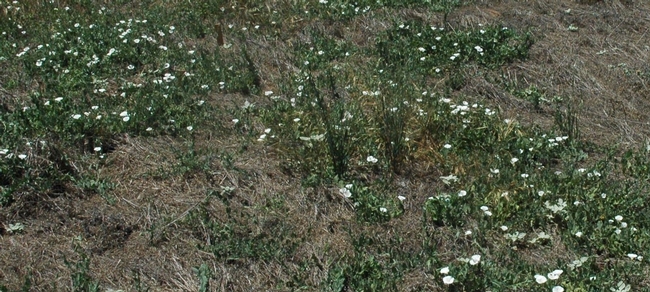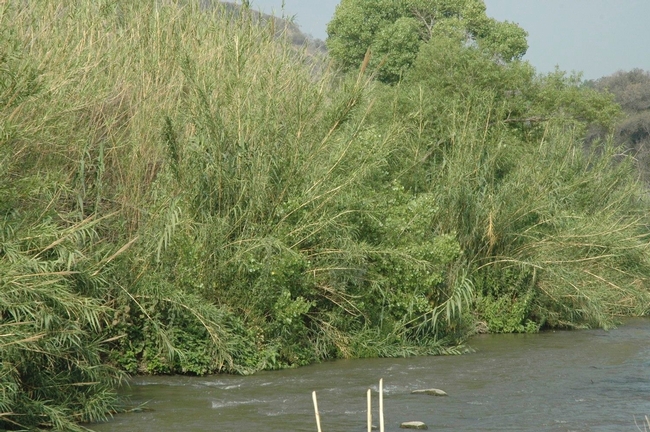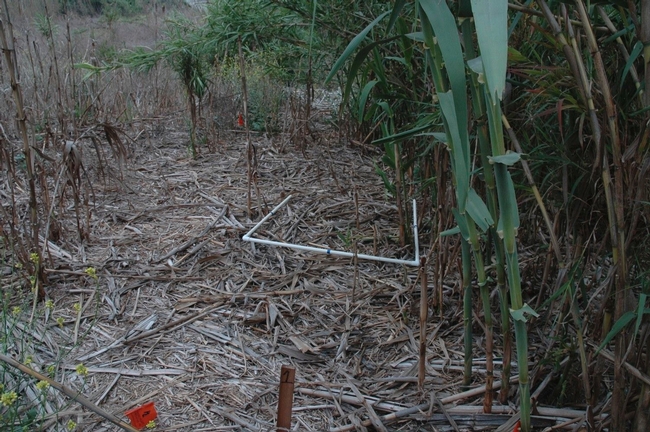Plant growth and development and herbicide efficacy, part 1

These scientists came up with an eight-day rule; after new bindweed shoots appeared you had eight days to cultivate again. If you waited longer than eight days, the shoots would be producing enough sugar through photosynthesis to replenish the rhizomes. In order to eradicate the bindweed you had to prevent any sugars from getting from new leaves to the rhizomes or root tissue.
They also discovered that pigs could do a very good job of rooting around in the soil and eating all of the rhizomes, but they cautioned that, “their snouts had to be in good working order”.
So how does this story relate to using herbicides, in particular glyphosate and imazapyr, to kill perennial species? In this case, these herbicides kill the plants by poisoning belowground tissues (i.e. roots, rhizomes, bulbs, tubers). But, and this is important, this only works if the herbicide reaches the belowground tissues.
The herbicide labels for glyphosate and imazapyr both say that they are most effective when applied in late summer/fall because that is when the sugar transport from leaves to soil organs is at its greatest. This is generally very good advice to follow, but sometimes it might be desirable to get some herbicide applied earlier in the year, say late spring. With regard to giant reed (Arundo donax), when does this shift happen; when is a shoot large enough to produce excess sugars? The photo below was taken on the Santa Ana River in 2007.
Actually, Bill Neill (a hard-working invasive plant warrior in southern CA) asked me to do research on this issue, he had been treating in spring and gotten good results, but this was not consistent with herbicide label recommendations. After four years of field experiments and lots of effort to get a paper published it was finally accepted by the Journal of Aquatic Plant Management (see below). The results from the research suggest that an April application can be just as effective as one in October if the re-growing shoots were tall enough. In one April trail location, the giant reed was about 4 to 6 feet tall and in the other April site the reed was 6 to 8 feet tall. The same herbicide treatments worked excellently on the taller plants, the following year there were few living shoots in any of the treated areas. In the trail with the shorter plants you couldn't tell the treated from the untreated control. The photo below is a treated plot from the successful site on the left and untreated on the right; it was taken when I collected biomass and density data 13 months after treating.
Is this paper definitive? Am I saying it will always work the same in every location? Not really, there could be other factors that I didn't discover or consider that influenced this result. But dead plants can't lie and I think the sugar transport idea is the most likely answer. It would be good to have this research replicated and backed up by laboratory work that could really explain what is going on and providing some tools that would allow you to make an informed decision on when a perennial plant is susceptible to control with one of these herbicides. Actually, Dr. Antonia Wijte did some work in this direction, so there is a place to start; her work can be viewed here.
Anyone got a good grad student that needs something to work on?
Bell, C.E. 2011. Giant reed (Arundo donax L.) response to glyphosate and imazapyr. Journal of Aquatic Plant Management 49:111-113.
Original source: Invasive Plants in Southern California blog

